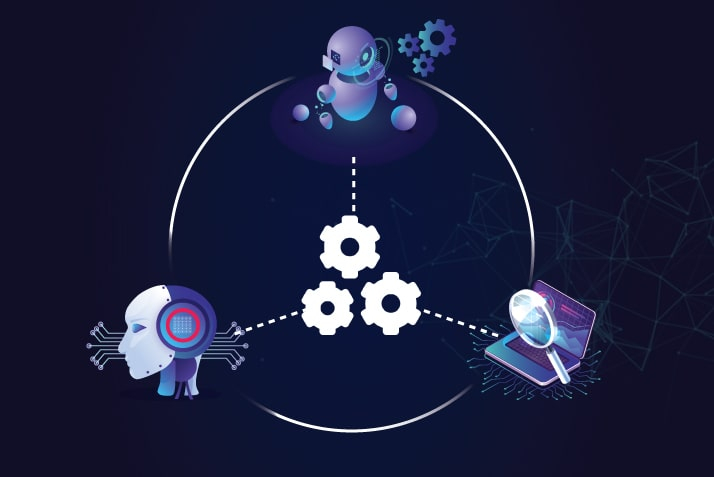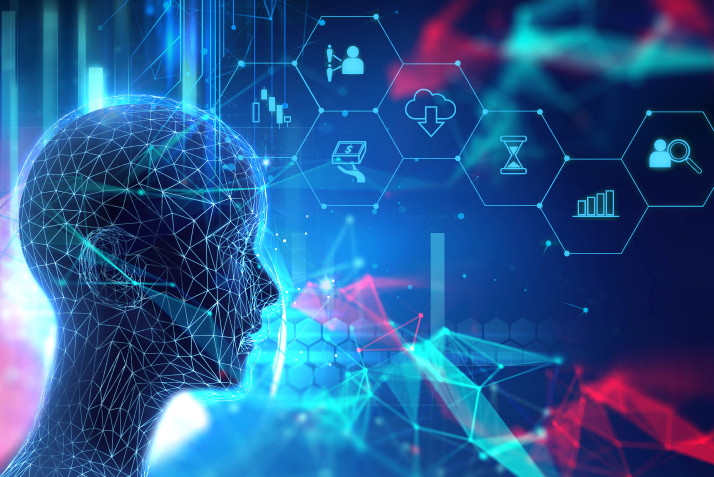New-age digital solutions that organizations should look to adopt to stay competitive
In our previous blog, we covered the importance of establishing a Digital first as a discipline. Once the key outcomes of the project are identified, we often stumble upon numerous challenges – the leaders should filter out the associated challenges and risks, to mitigate them and balance out the desired state benefits versus the current state benefits. This will provide better visibility for the teams involved in the transformational process. An approach like iOPEX’s DELTA model can help leaders to deal with the challenges relating to cultural resistance, choosing, and augmenting data, reimaging processes, picking the relevant tools & technologies, and creating a centralized zone for a unified transformation. At iOPEX Technologies, we have identified the following technology trends that could make the waves of transformation faster, better, and more durable for 2023 and beyond.
Top 6 Digital first trends that you consider adopting
1. Automation to Orchestration Journey
Traditionally, the CIO teams were solely responsible for new technology integrations in an organization, but the present and the future will be in the hands of business owners or BU heads working in conjunction with IT to determine an outcome-based approach in picking the right set of tools and technologies. RPA has been the front runner in an enterprise in the Digital First Engineering journey, With the evolution of the citizen workforce (developers, data scientists, and integrators) and the increasing awareness of hyperautomation solutions, organizations have started to realize the importance of embracing technologies that cater to both citizen and skilled development.
2. Embracing Process Mining to accelerate Digital First transformation
Traditionally, the CIO teams were solely responsible for new technology integrations in an organization, but the present and the future will be in the hands of business owners or BU heads working in conjunction with IT to determine an outcome-based approach in picking the right set of tools and technologies. RPA has been the front runner in an enterprise in the Digital First Engineering journey, With the evolution of the citizen workforce (developers, data scientists, and integrators) and the increasing awareness of hyperautomation solutions, organizations have started to realize the importance of embracing technologies that cater to both citizen and skilled development.
3. Higher usage of Low-code platforms for faster transformation
With the ever-demanding business and customer requirements, Low-code platforms provide the flexibility to enhance the existing processes to meet those needs without affecting the current workflow. Building a successful Digital First strategy needs better integration, automation, and analytics. Low-code platforms are built with this purpose in mind with automation tooling and rapid interactions and this has led all the software-as-a-service (SaaS) providers to adopt low-code programming technologies. Companies like Pipefy, and Outsystems are speeding up the process by offering pre-trained AI/ML models. Companies can build new and replace existing applications with less time, cost, and resources, and what’s more, it also allows citizen developers to participate in the app development process, which makes low-code/no-code platforms a must for your digital transformation strategy. AI/ML can be used by rapid application builders without requiring complicated python coding, vast datasets, or even ML training. App developers may simply drag and drop AI/ML models into their apps and consume them. According to a survey report issued by KBV research, the global application development software market is estimated to reach $551.7 billion by 2027, growing at a 22.3 percent compound annual growth rate (CAGR) over the forecast period.
4. Evolution of Synthetic Data for completing automation
Data plays a major role in implementing the different types of transformation (Automation led digital experience), especially while developing successful AI and ML models. Much data is available through omnichannel and multichannel platforms, but most are unstructured or non-attributed. Another major bottleneck is the cost associated with gathering real-world data. Synthetic data, as the name implies, is data generated acting as a twin frequently created to apply algorithms and is utilized for various purposes, including testing model validation and AI model training. Synthetic data is gathered by the process of data aggregation and augmentation. Extract Load Transform (ELT) plays an important role in making highly reusable synthetic data Research institutes like Gartner believe that by 2030 synthetic data will overshadow the usage of real-world data.
Source: Gartner
5. ML Ops: Continuous Delivery, data models, and automation pipelines for machine learning
With the evolution of DevOps, the software development cycle became quicker, deployment velocity increased, and product releases became more dependable and auditable with continuous feedback and updates. A similar approach will be adopted when building machine learning data models. MLOps enables the data science and IT teams to collaborate and enhance the ML data model development & deployment speed by continuous monitoring, validation, and updates. Traditionally, while deploying machine learning solutions, the data scientists develop models and handover them over to the IT teams for deployment, this process is highly error-prone, as the engineers may not understand the underlying packages used or the modeling approach adopted. The better way would be to keep the AL/ML evolution process experimental with different modeling techniques, features, and algorithms. While deploying, there should be a workflow/ ops for continuous training of models from new data, change management, and use of automated tools and processes to implement continuous integration & continuous delivery (CI/CD) systems. Some of the key outcomes are:
- MLOps helps to automate machine learning artifacts such as data validation, ML Model testing, and model integration.
- MLOps strives to synchronize the machine learning and software application release cycles.
- MLOps adopts agile methodologies like DevOps
6. AIOps: IT Ops, ITSM, and DevOps
With observability gaining traction across IT Ops and ITSM services, AIOps will be pivotal in delivering a superior customer experience through better products, lesser downtime, and improved customer service. Discovery, collection, aggregation, and analysis should be automated using AI and machine learning algorithms to capitalize on the benefits of observability data. Cognitive intelligence can provide solutions to the IT teams, DevOps, and SRE teams to prevent system outages, improve IT reliability, and maintain high uptime for business-critical apps through anomalies, alerts, and patterns. Observability helps to unlock true operational visibility between systems and support services from the data collected in the form of metrics, traces, and event logs. AIOps automates all these with artificial intelligence.
With humans in the loop working with these AI models, can help organizations to have AI-led operations. AIOps also helps establish data-driven decision-making processes and to analyze a large sum of data in play, we have analytics process automation that allows anyone in your organization to easily share data, automate tedious and complex processes, and turn data into results. Once we structure the data, define the processes, and integrate it with intelligent or cognitive solutions (AI/ML), then it is imperative to include analytics to gain insights for the continuous enhancement of data and processes. APA converges three key pillars of automation and digital transformation to enable the democratization of data and analytics, the automation of business processes, and the upskilling of people for quick wins and transformative outcomes.
Way forward: A Digital first organization prioritizes the adoption of all the aforementioned digital technologies backed by strong leadership that focuses on transforming experiences through a Digital first mindset. It's not just about giving employees the latest tools and technologies, but it must be correlated to the organization's business model, processes, and objectives. This facilitates the executives to select the most appropriate solutions, paving the path for an outcome-driven digitalization.














